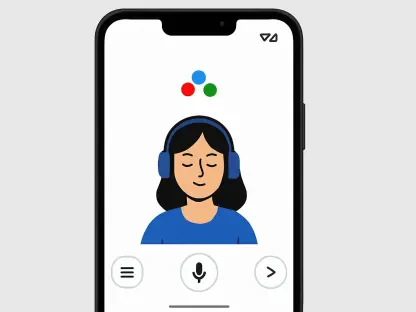The mobile gaming industry has reached unprecedented levels of growth, but this progress has been accompanied by an equally significant rise in the complexity and prevalence of mobile advertisements. These ads, which were previously viewed as mere inconveniences, have evolved into disruptive elements that severely compromise the gaming experience, eroding player trust and loyalty in the process. The urgent need to address these problematic ads and implement effective solutions to improve the player’s ad experience has become clear.
Identifying the Ad Issues
Mobile gaming ads have transformed into significant obstacles that detract from the overall player experience. Non-skippable and intrusive ads are among the primary offenders, often interrupting gameplay at critical moments and frustrating users who are simply looking to enjoy their games. Examples include autoplay videos that are difficult to exit due to deceptive close buttons and endless playable ads that force players into repeated interactions. This relentless intrusion leads to high abandonment rates, with 93% of players leaving games because of deceptive buttons and 84% uninstalling games after repeated exposure to disruptive ads. The impact is profound, contributing to an immediate loss of player trust and loyalty, directly affecting a game’s success and longevity.
Another pressing issue is the prevalence of misleading and malicious ads. These ads often misrepresent the actual gameplay experience or display fake system warnings and prize scams, bewildering and irritating players. The industry’s struggle to detect and eliminate these deceptive practices is exacerbated by their increasing subtlety and sophistication. Such ads are challenging for monitoring teams to identify, resulting in widespread exposure to malvertising. Misleading ads damage user trust significantly, with over half of all players reporting encounters with such deceptions. This erosion of trust distorts the player’s perception of the game and the industry’s credibility at large.
Offensive ads present a different, but equally harmful, problem. Advertisements imbued with sexist or culturally insensitive content not only alienate a significant portion of the gaming population but also foster a hostile environment that many players find intolerable. Nearly half of U.S. gamers are women, and they disengage immediately upon exposure to offensive content. Meanwhile, male gamers also express discomfort toward inappropriate or out-of-context sexualized narratives, leading to disengagement and churn. This loss of player engagement translates directly into a loss of potential brand advocates, who play a crucial role in promoting games through word-of-mouth and community support.
Proposing Solutions
Addressing these pervasive ad issues requires a multi-faceted approach. Developing detailed taxonomies to classify and identify offending ads is a crucial first step. Clear definitions allow studios and ad teams to recognize patterns and understand the triggers behind problematic ads. This transparency makes it easier to address and mitigate the recurrence of these ads, ultimately fostering a better player experience. By having a structured way to pinpoint the ads most likely to cause frustration, teams can implement strategies to minimize or eliminate these ads from the rotation, ensuring that they do not detract from the gaming experience.
Responsibility for ad quality management lies chiefly with the studios. A cross-functional approach involving teams from monetization, user acquisition, and live operations is essential to handle this challenge effectively. Automation plays a critical role in managing the volume and complexity of ads, but it must be complemented by consistent human oversight to ensure nuanced detection and intervention. Studios can set up alert systems based on player feedback, which serve as an early warning for problematic ads. Additionally, fostering strong relationships with ad tech providers ensures that studios can leverage the latest technologies and best practices in ad quality management. This blend of automation and human insight creates a robust framework for detecting and addressing bad ads before they reach players.
Industry Trends and Regulations
The increasing public and regulatory backlash against bad ads underscores the urgent need for industry reform. Agencies like the UK’s Advertising Standards Authority (ASA) are intensifying their scrutiny on mobile ads, emphasizing the importance of adhering to higher standards to avoid penalties. These regulatory pressures represent a powerful motivator for studios to prioritize ad quality and ensure that their ads meet acceptable standards. Falling short invites scrutiny and sanctions, which can damage a studio’s reputation and financial standing. Consequently, proactive measures to improve ad quality are not just beneficial; they are essential to stay within regulatory compliance.
Unified industry standards are indispensable for combating the issue of bad ads. Collaborative efforts among publishers and studios to define and enforce acceptable content standards protect players and maintain community trust. Creating and adhering to these standards ensures a consistent experience across the industry, which is critical for fostering player loyalty and safeguarding the industry’s reputation. By working together, stakeholders can develop comprehensive guidelines that everyone in the industry abides by, enhancing player experience and setting expectations. This collective action is vital for long-term sustainability and growth, allowing the mobile gaming industry to thrive while nurturing a healthy ecosystem for players and developers alike.
Toward a Better Ad Experience
An effective strategy necessitates establishing higher standards and accountability within studios. Proactive steps in managing ad quality, such as developing smarter systems and refining management strategies, are imperative to filter out bad ads before they reach players. This proactive approach significantly enhances player retention and trust, essential elements for a game’s success. Studios should continually evaluate ad performance, gather player feedback, and make adjustments to ensure that ads add value rather than detract from the gaming experience.
Creating brand advocates through proper ad management is perhaps the most rewarding outcome of this process. Addressing the systemic issues associated with bad ads not only retains players but also transforms them into enthusiastic supporters of the games they love. These advocates contribute positively to word-of-mouth marketing, community building, and fostering a loyal player base. The establishment of a balanced and positive ad ecosystem promises not just a better immediate player experience but a brighter future for mobile gaming overall. As the industry continues to evolve, maintaining this equilibrium between ad quality and player satisfaction will be crucial for sustained growth and innovation.
Final Thoughts
The mobile gaming industry has experienced remarkable growth in recent years, reaching new and unprecedented levels. However, this progress has been matched by a significant increase in both the complexity and abundance of mobile advertisements. These ads, once considered minor annoyances, have now turned into major disruptions that negatively impact the gaming experience. This, in turn, undermines player trust and loyalty.
Initially seen as minor, these ads have evolved to become intrusive elements that disrupt gameplay, making it difficult for players to enjoy their favorite games without constant interruptions. As a result, frustration among gamers is on the rise, and their willingness to engage with certain games is waning. The negative impact of these ads extends beyond mere inconvenience; they create an environment that can lead to players abandoning games altogether.
Given this situation, it’s become urgent to address the issues caused by these problematic ads and find effective solutions to enhance the player’s in-game ad experience. Game developers and advertisers must work together to create advertising strategies that are less intrusive and more considerate of the player’s enjoyment. Implementing such strategies will be crucial in maintaining player interest and ensuring the continued success of the mobile gaming industry. By prioritizing the player’s experience and finding a balance between ads and gameplay, the industry can sustain its growth while keeping players satisfied and engaged.









